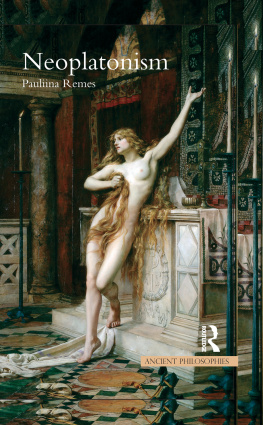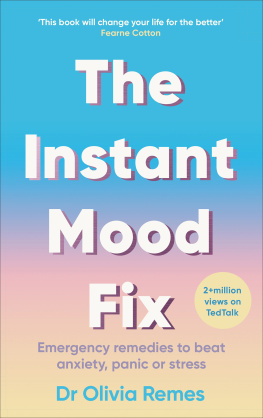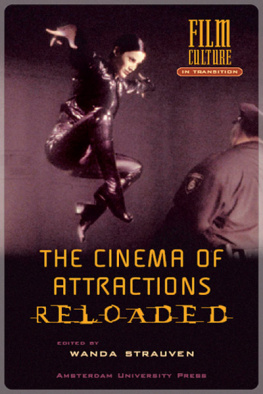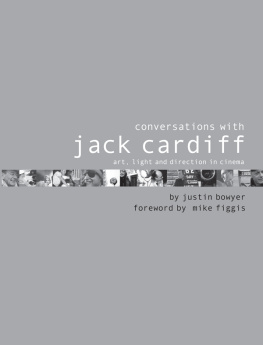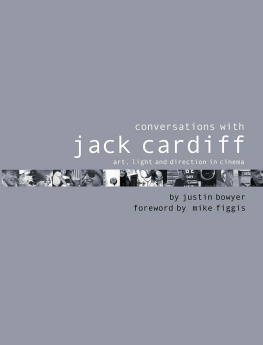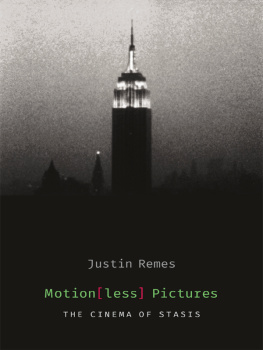Justin Remes - Absence in Cinema
Here you can read online Justin Remes - Absence in Cinema full text of the book (entire story) in english for free. Download pdf and epub, get meaning, cover and reviews about this ebook. publisher: Lightning Source Inc. (Tier 3), genre: Non-fiction. Description of the work, (preface) as well as reviews are available. Best literature library LitArk.com created for fans of good reading and offers a wide selection of genres:
Romance novel
Science fiction
Adventure
Detective
Science
History
Home and family
Prose
Art
Politics
Computer
Non-fiction
Religion
Business
Children
Humor
Choose a favorite category and find really read worthwhile books. Enjoy immersion in the world of imagination, feel the emotions of the characters or learn something new for yourself, make an fascinating discovery.

- Book:Absence in Cinema
- Author:
- Publisher:Lightning Source Inc. (Tier 3)
- Genre:
- Rating:5 / 5
- Favourites:Add to favourites
- Your mark:
- 100
- 1
- 2
- 3
- 4
- 5
Absence in Cinema: summary, description and annotation
We offer to read an annotation, description, summary or preface (depends on what the author of the book "Absence in Cinema" wrote himself). If you haven't found the necessary information about the book — write in the comments, we will try to find it.
Absence in Cinema — read online for free the complete book (whole text) full work
Below is the text of the book, divided by pages. System saving the place of the last page read, allows you to conveniently read the book "Absence in Cinema" online for free, without having to search again every time where you left off. Put a bookmark, and you can go to the page where you finished reading at any time.
Font size:
Interval:
Bookmark:
T he arguments in this book have been heavily informed by feedback provided by a number of filmmakers and film scholars, including Naomi Uman, Jennifer Proctor, Ross Lipman, Scott MacDonald, John Powers, Tanya Shilina-Conte, Glyn Davis, Elena Gorfinkel, Ofer Eliaz, Dijana Jelaa, Daniel Gilfillan, Jeanpaul Goergen, Leo Enticknap, and Andy Birtwistle. I also appreciate the hard work of everyone at Columbia University Press, including Philip Leventhal, John Belton, Monique Briones, Milenda Nan Ok Lee, and my copy editor Anita OBrien. CUP published my first book, Motion(less) Pictures: The Cinema of Stasis , and it was an honor to work with the press again. In both cases, the editors pushed me to improve my scholarship while also respecting my authorial autonomy. Additionally, the anonymous readers commissioned by the press (as well as the anonymous readers at JCMS: The Journal of Cinema and Media Studies ) provided both words of encouragement and perceptive recommendations. I am also grateful to Hiroshi Sugimoto and Catherine Belloy at the Marian Goodman Gallery for allowing me to use Sugimotos photograph Teatro Comunale di Ferrara (2015) on the cover of this book.
I received a great deal of support for this project from Iowa State University, including a Publication Subvention Grant from the Iowa State University Publication Endowment (ISU Foundation) and a Center for Excellence in the Arts and Humanities (CEAH) Research Grant. I would like to thank Sandra Norvell for helping me prepare my application materials for these grants (and several others), as well as the English Department at ISU, which provided me with dedicated research assistants like Meredith Smith-Lane and Willis Patenaude. I appreciate the fact that my department gives me the freedom to select the subject matter of a number of my courses. Teaching courses like Absence in Cinema, Experimental Film, and Found Footage Films has enabled me to spend more time thinking about the films and writings that are most important to me and has given me the opportunity to hear insightful comments on these works from a number of smart students.
I would like to thank my friends Matthew Fisher and David Zimmerman, whose infectious enthusiasm for cinema and the arts continually energizes me. My gratitude extends to my mother, my brother, my sister, Nana, Ashley Ford, and my in-laws, Jim and Cynthia Rosiek, all of whom have been constant sources of love and encouragement. Finally, I would like to dedicate this book to my wife, Katrina, for the tireless support that shes given me over the past twenty years, and my son, James, who is the most perceptive eight-year-old film critic that I know.
Wherever we are, what we hear is mostly noise. When we ignore it, it disturbs us. When we listen to it, we find it fascinating.
John Cage, Silence
The darkness that I like is the darkness of a movie theater.
Anouk de Clercq, Black (2015)
L uis Buuel and Salvador Dal were no strangers to scandal. In their first film, Un Chien Andalou ( An Andalusian Dog , 1929), the mischievous Surrealists assaulted spectators with a barrage of shocking and disturbing images: a razorblade slicing open an eyeball, a man fondling a womans bare breasts as blood pours out of his mouth, two corpses buried in sand at the beach. Yet, somehow, Buuel and Dals second film, LAge dOr ( The Golden Age , 1930) (1930), was even more provocative. In it, a father shoots his son, a mans fingers are bitten off by his lover, a woman fellates the toes of a statue, and Jesus Christ makes a cameo appearance as a pedophile and rapist. Critics denounced the film as a criminal heresy and bolshevik excrement, and at a Paris screening on December 3, 1930, it provoked a riot.
This scandal foregrounds a number of unsettling facts, from the rabid anti-Semitism that spread through Europe in the 1930s to the pervasiveness of film censorship throughout much of the twentieth century. I want to direct attention, however, to a less salient element of the LAge dOr riot: the tactics embraced by the Fascist mob. In addition to the aforementioned blackjacks and smoke bombs, at the sacrilegious moment when a monstrance is placed in a gutter, the rioters hurled purple ink at the screen. This is interesting for a number of reasons. To begin, if one were to splash purple ink on, say, Salvador Dals painting The Great Masturbator (1929), one would effectively destroy the artwork (and, of course, a number of Surrealist paintings were destroyed by the philistine mob that evening). But when ink is splashed on a movie screen, the film itself remains unharmed; it continues to circulate unmolested through the projector. Why hurl ink at the screen on which the film is projected rather than destroying the film itself? The purple ink is interesting for another reason: LAge dOr is a talkie, one that exploits highly complex sound-image relationships. To erase the films image does nothing to suppress its sound track: the music from Wagners Tristan und Isolde (1859), the crackling of a fire, the sound of a horse-drawn cart that barrels through a bourgeois dinner party for no apparent reason.
Just a few days before the Parisian mob attempted to turn LAge dOr into an imageless film, an intentionally imageless film was screened at the 2nd International Congress of Independent Film in Brussels, an event that took place from November 27 through December 1, 1930. The imageless film was Walter Ruttmanns eleven-minute intermedia experiment Weekend ( Wochenende ). To create this work, Ruttmann wandered through Berlin with a Tri-Ergon film camera and recorded his surroundings without ever removing the cameras lens cap. If a right-wing mob attended a screening of Weekend in 1930 and wanted to protest the film, would they still throw ink at the imageless screen? And if they did so, would the other members of the audience miss anything?
In my previous book, Motion(less) Pictures: The Cinema of Stasis , I coined the term monochrome films to describe cinematic works that exploit the affective intensity of the empty screen. I also situate Weekend in the context of twentieth-century music history, arguing that Ruttmann has profound affinities with avant-garde composers like Luigi Russolo and Pierre Schaeffer since all three manipulate quotidian sounds in an attempt to create an art of noises.
Listening makes the invisible present .
Don Ihde, The Auditory Dimension
Walter Ruttmann is one of the most innovative and daring filmmakers in cinema history. His animated Lichtspiel ( Lightplay ) films Opus I (1921), Opus II (1923), Opus III (1924), and Opus IV (1925)are among the first abstract films ever made: colorful and carefully choreographed dances between rigid geometric shapes and sensuous blobs.
As forward-thinking and experimental as his films of the 1920s are, Weekend is Ruttmanns most formally radical film. In fact, it is one of the most formally radical films ever made. Discussions of imageless films tend to begin with works from the 1950s or 1960s, such as Guy Debords Howls for Sade ( Hurlements en faveur de Sade ) (1952), Peter Kubelkas Arnulf Rainer (1960), or Nam June Paiks Zen for Film (19621964).
However Weekend might have been projected, the film has had a powerful effect on audiences. It has been called stunning, thrilling, and alive with meaning. Such accolades are normally reserved for Ruttmanns most famous film, Berlin: Symphony of a Great City , another work that attempts to capture the zeitgeist of Berlin in the early twentieth century. There is, of course, a crucial difference between the two films: Berlin foregrounds the sights of the great city, whereas Weekend foregrounds its sounds , from the pastoral soundscapes of the countryside to the industrial cacophony of cars, marching bands, and sirens. It is obvious why Ruttmann did not include sound in Berlin : synchronized sound was not yet available to filmmakers. (Alan Croslands landmark talkie, The Jazz Singer [1927], would be released two weeks after the German premiere of Berlin .) But synchronized sound clearly was an option when Ruttmann created Weekend . What are we to make of Ruttmanns odd experiment with sensory deprivation? Why eliminate sight from the cinematic sensory regime?
Font size:
Interval:
Bookmark:
Similar books «Absence in Cinema»
Look at similar books to Absence in Cinema. We have selected literature similar in name and meaning in the hope of providing readers with more options to find new, interesting, not yet read works.
Discussion, reviews of the book Absence in Cinema and just readers' own opinions. Leave your comments, write what you think about the work, its meaning or the main characters. Specify what exactly you liked and what you didn't like, and why you think so.





